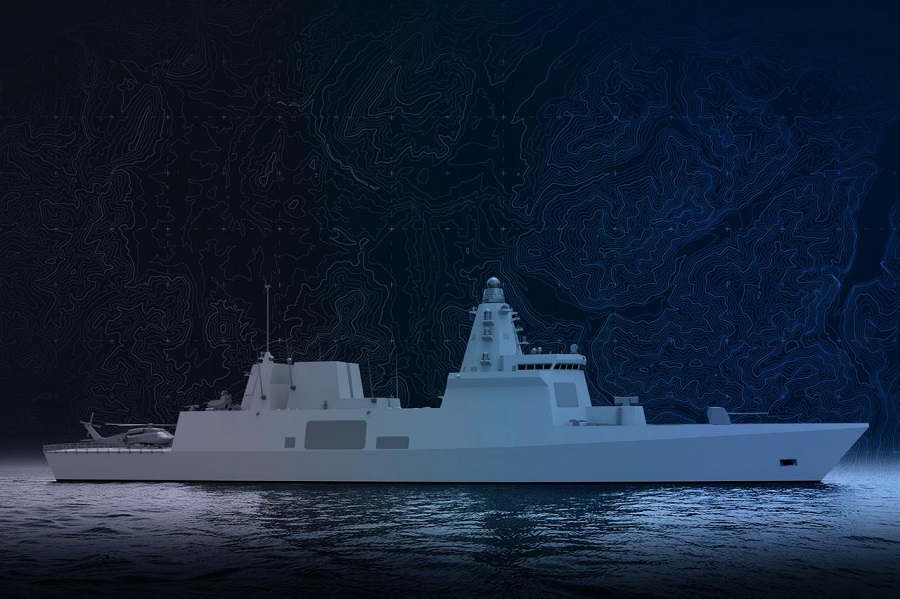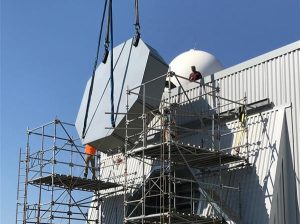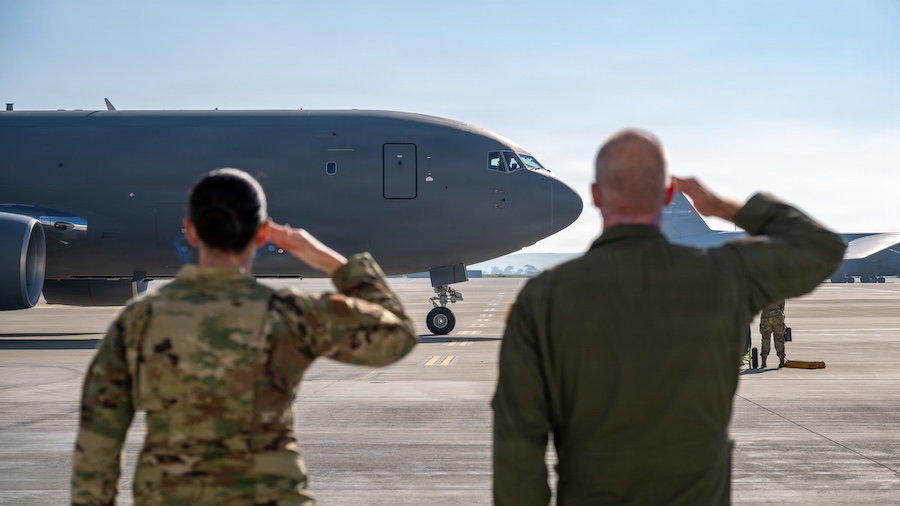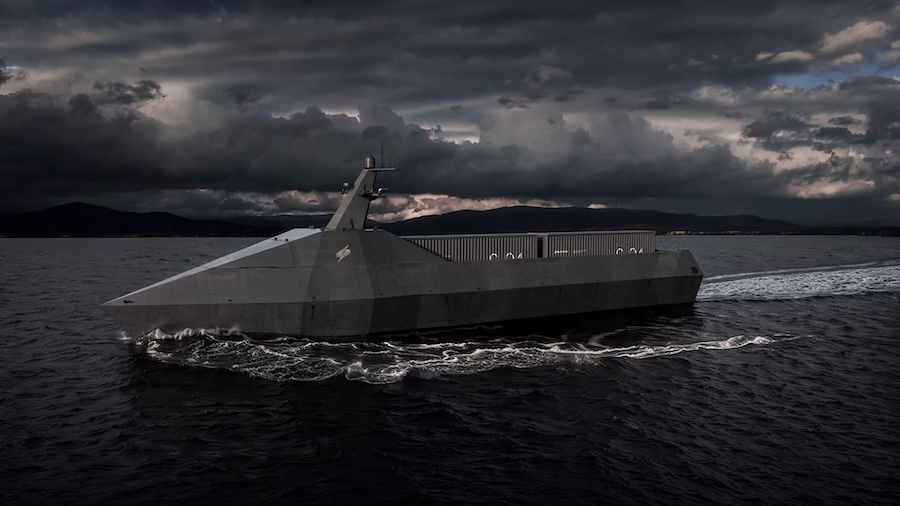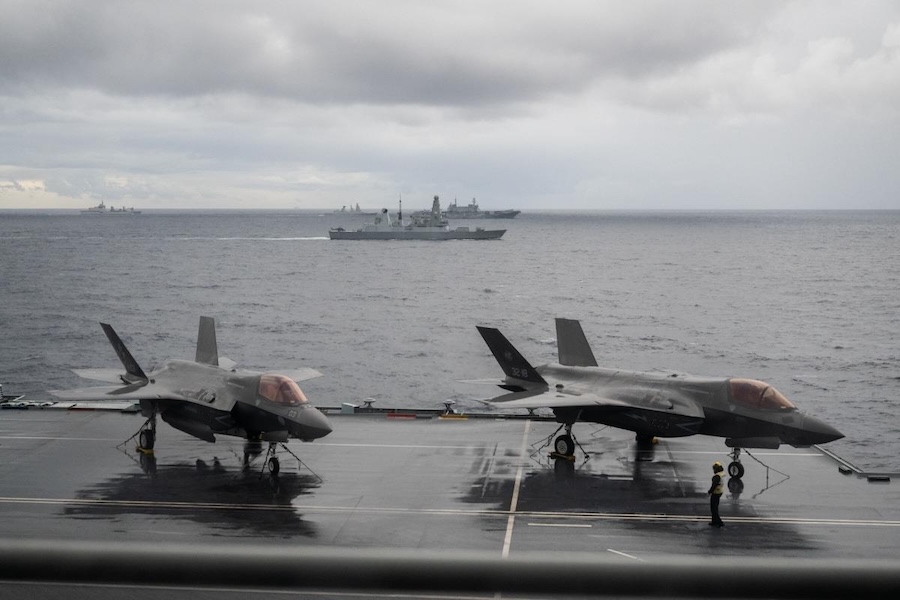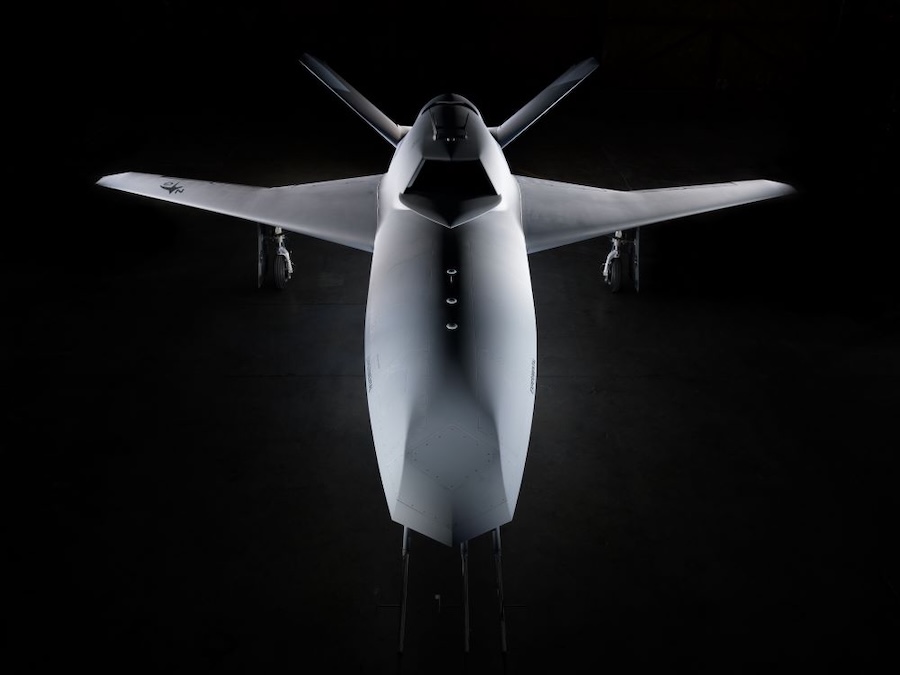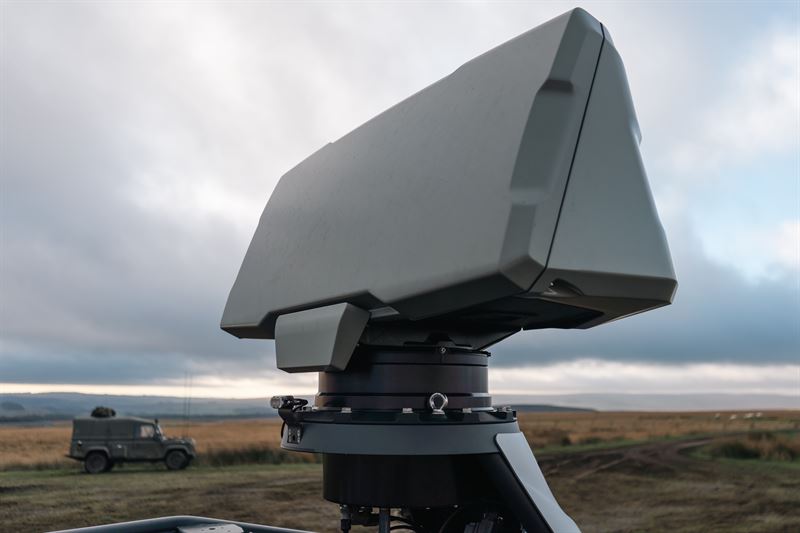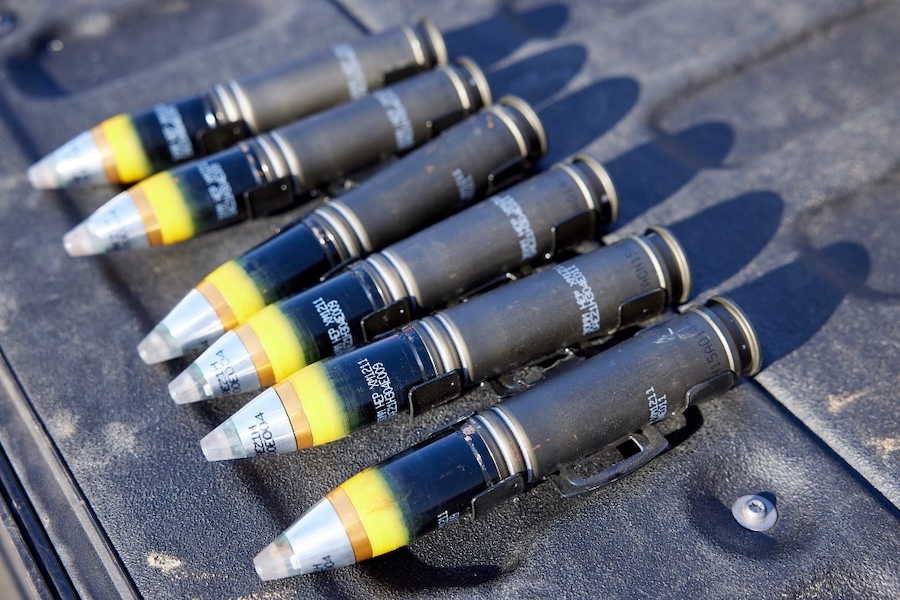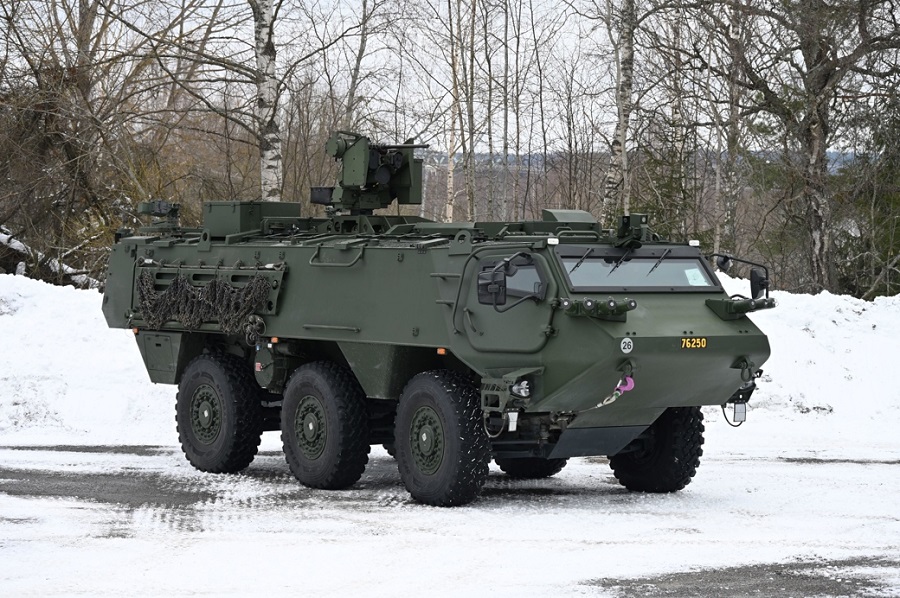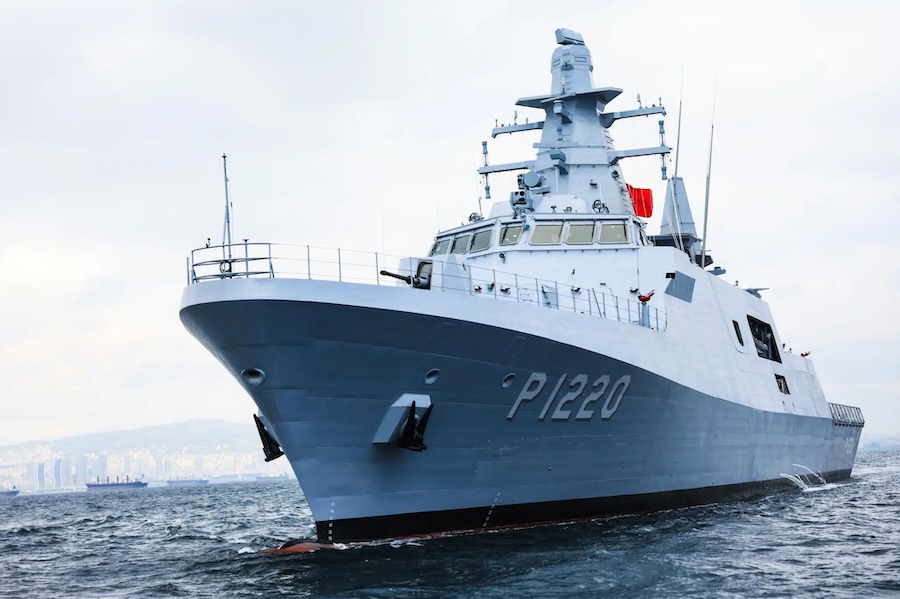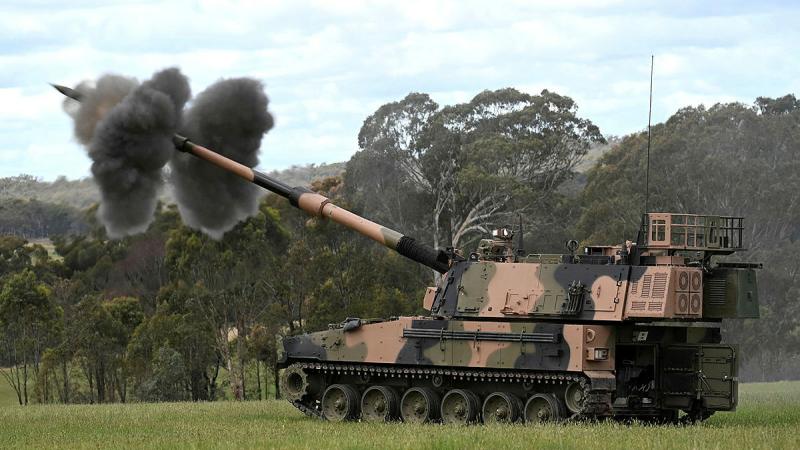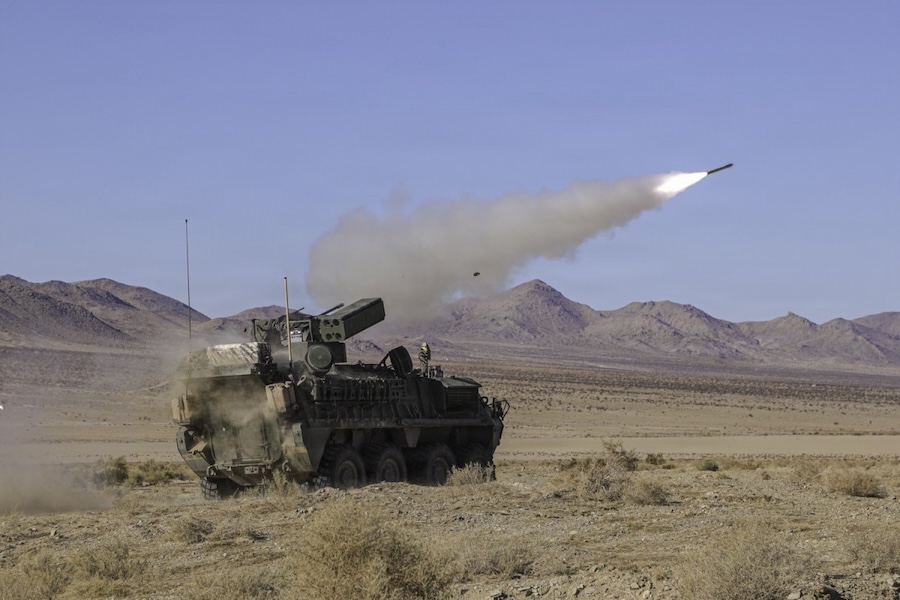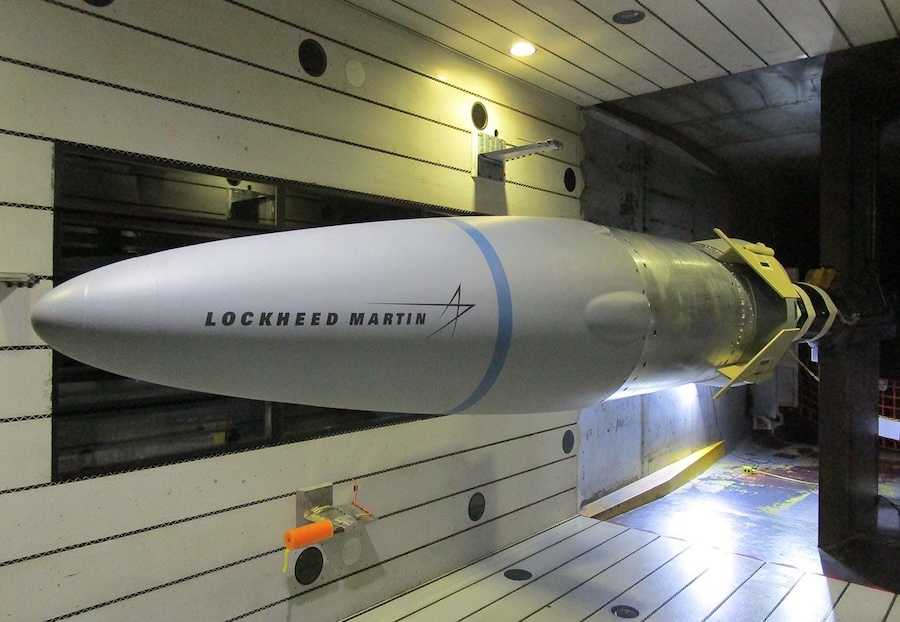ASFAT CEO Mustafa Ilbas and Turkish Navy Commander Admiral Ercument Tatlioglu signed the construction agreement at the stand of the Presidency of Defence Industries (SSB). The contract covers one ship to be launched in 2028 and delivered to the navy in 2030, with steel cutting beginning in November 2025 at Istanbul Naval Shipyard Command.
According to ASFAT, the vessel will be constructed in about 60 blocks, with one full block expected before the end of this year. “In summary, this ship is going to be a game changer in air defense, not only to secure the sea but also the mainland,” an ASFAT official told Breaking Defense in July.
Turkish outlet TurDef reported that the updated design presented at IDEF 2025 includes a revised layout of sensor and electronic warfare systems and minor structural adjustments. The redesigned mast features a strengthened arrangement of the CAFRAD dual-band AESA radar suite, with the X-band Multi-Function Radar (CFR) positioned lower for targeting functions and the larger S-band Long-Range Searching Radar (UMR) acting as the primary search component.
Fixed electronic warfare arrays are placed above the CFR, providing a clearer view of TF-2000’s electronic warfare layout, expected to surpass the capabilities of I-class frigates. The destroyer is envisioned as a key element of Türkiye’s air defence network, combining CAFRAD dual-band radar with layered missile defence, including ballistic missile interception.
Emerging technologies such as unmanned surface vessels (USVs) and swarm-capable UAVs are also being considered for asymmetric roles. Defence analyst Arda Mevlutoglu wrote on X (formerly Twitter): “TF-2000’s ballistic missile prevention capability and mission necessitate a series of very difficult, deep, and comprehensive changes and transformations in terms of organization and doctrine.”
He explained: “The strategic air defense duty and responsibility of Türkiye belongs to the Air Force Command. Ballistic missiles naturally fall within this scope. TF-2000 having ballistic missile defense capability means a sharing of duties and authority between the Naval Forces Command and Air Force Command.”
“This will not be just an organizational, bureaucratic sharing or redefinition. Because for these ships to be able to prevent effectively, they need to be able to receive real-time data from land- and air-based sensors and intelligence sources,” he said.
“This puts before us as a necessity full C4ISR harmony between air, land, and naval forces. There is a lot of work to be done and a long way to go in this regard. That aside, when TF2000 enters service, it will bring the air, land, and naval forces closer together than ever before,” Mevlutoglu concluded.




